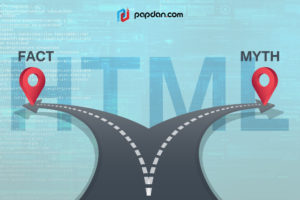According to official specs, replaced elements are content outside the scope of the CSS formatting model, such as an image, embedded document, or applet. For instance, the content of the HTML IMG element is often replaced by the image that its src attribute designates. Besides, replaced elements often have intrinsic dimensions, such as an intrinsic width, an intrinsic height, and an intrinsic height specified in absolute units. Now, you may have a general description of what a replaced element is, but as a web developer, you have to look deeper about replaced elements.
Replaced Elements in the Real World
To discuss in a full description about the replaced elements, we need to go to a different resource, namely the Rendering section of the HTML Living Standard document. But, when you look deeper, the specs can be confusing. This is because some HTML elements operate as replaced elements all the time, while other do it only in specific circumstances.
Embedded Content
Embedded content is the first category of replaced elements. Embedded content means any element that imports another resource into the document, or content from another vocabulary that is inserted into the document. While these external resources have the intrinsic dimensions that match the requirements of the definition.
Embed, iframe, and video are the main elements in this category. Since they always import external content into your document, these elements are always treated as replaced elements. There are more elements that a bit more complicated that fall into this category only in special circumstances, such as:
- applet – Treated as a replaced element when it represents a plugin, otherwise it’s treated as an ordinary element.
- audio – Treated as a replaced element only when it is “exposing a user interface element”. Will render about one line high, as wide as is necessary to expose the user agent’s user interface features.
- object – Treated as a replaced element when it represents an image, plugin, or nested browsing context (similar to an iframe).
- canvas – Treated as a replaced element when it represents embedded content. That is, it contains the element’s bitmap, if any, or else a transparent black bitmap with the same intrinsic dimensions as the element.
Images
Images are others elements that treated as a replaced element with the intrinsic dimensions of the image. This category also includes the input elements with a type=”image” attribute.
When the image is not rendered on the page, things get a bit more complicated for several reasons. The <input type=”image”> will be displayed as a normal button.
Default Size of Replaced Elements
We can understand this elements by these three basic rules:
- if the object has explicit width, height and ratio values, use them;
- if the object only has ratio, use auto for both width and height while maintaining the said ratio;
- if none of these dimensions are available:
– use width: 300px; height: 150px when the viewport is larger than 300px
– use “auto” for both width and height and a ratio of 2:1 when the viewport is smaller than 300px;
What About the Other Types of Form Controls?
There are many misconceptions about other types of form controls are replaced elements too. After all, these elements are also rendered with a default width and height. In fact, most people consider intrinsic dimensions actually comes from the following line:
Each kind of form control is also described in the widgets section, which describes the look and feel of the control. Another reason why form control looks different from one browser to the next and from one OS to another:
The elements defined in this section can be rendered in a variety of manners, within the guidelines provided below. User agents are encouraged to set the ‘appearance’ CSS property appropriately to achieve platform-native appearances for widgets, and are expected to implement any relevant animations,etc, that are appropriate for the platform.
Conclusion
It is easy to get confused about replaced elements and form controls. But, they are different categories of HTML elements, with <input type=”image”> being the only form control that is a replaced element.



